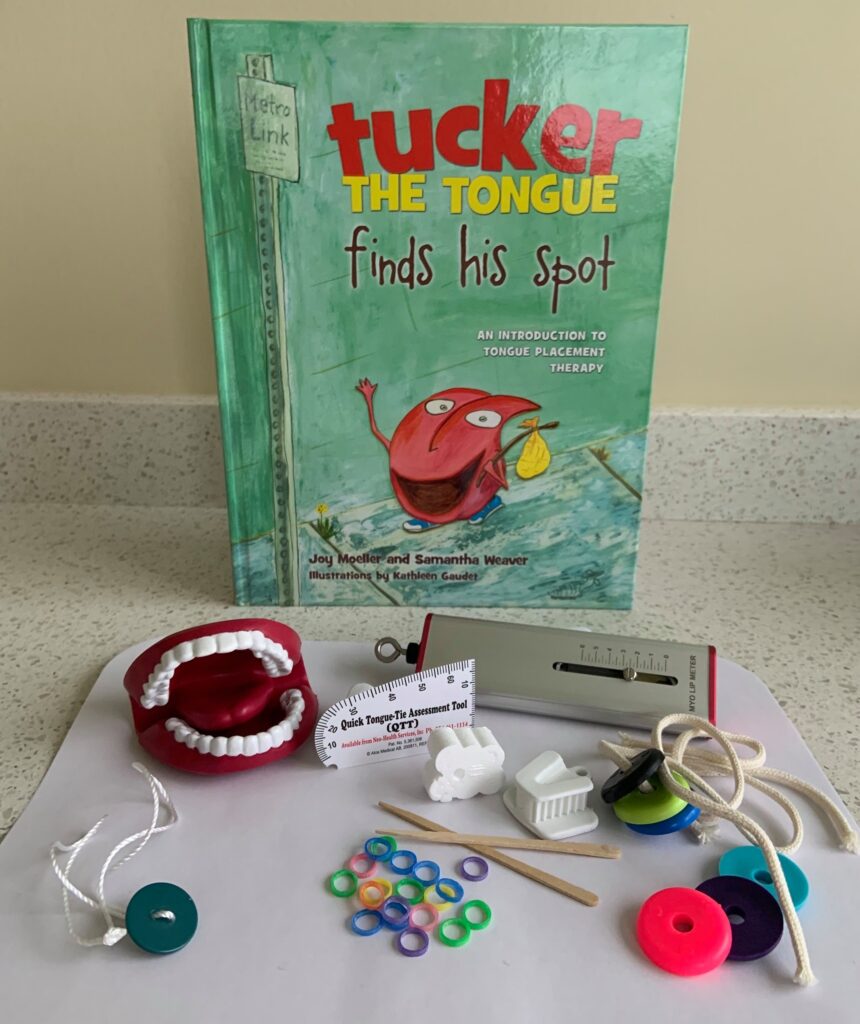OROFACIAL MYOLOGY
What is Orofacial Myology?
Orofacial Myology is “the study and treatment of oral and facial muscles as they relate to speech, dentition, chewing/bolus collection, swallowing and overall mental and physical health.” – S.R. Holtzman
Pina Mazza is a Board Certified Orofacial Myologist with the IAOM and Registerd Dental Hygienist. After taking my first course in myofunctional therapy with the IAOM in 2018, I was able to expand the scope of my practice and passion to educate my clients about myofunctional disorders and provide myofunctional therapy to wholly help my clients achieve a healthy smile for a lifetime. Integrating myofunctional therapy into the scope of my dental hygiene practice has brought me the greatest gratification in my professional life thus far.
Oral habits that can influence the development of myofunctional disorders and improper swallowing are:
- Tongue Sucking
- Tongue Thrusting
- Thumb and Finger Sucking
- Lip Sucking
- Mouth Breathing
- Pacifier Use
Myofunctional disorders may influence Speech articulation, specifically with S, R, L, AND TH sounds. The goal of myofunctional therapy by an Orofacial Myologist is to achieve proper tongue rest posture, closed lip posture and open nasal airways.
Myofunctional disorders are often multifactorial and therefore will require a multidisciplinary approach. Myofunctional therapy may involve the Orofacial Myologist having to work with other health care professionals such as dentists, orthodontists, chiropractors, osteopaths, and ENT specialists when myofunctional disorders are present.
If you are looking for myofunctional therapy in and/or near Toronto, call 416.835.5002 to book an appointment with Pina Mazza, an orofacial myologist in Vaughan.
FAQs
- Myofunctional therapy teaches exercises to restore proper function and balance to the facial and chewing muscles and the tongue muscles.
- Myofunctional therapy teaches exercises to eliminate oral habits that are negatively influencing the orofacial development of bones and muscles.
- Myofunctional therapy exercises teach nasal breathing, if mouth breathing is present.
The time needed to complete myofunctional therapy varies for each individual.
Factors influencing myofunctional therapy treatment time include:
- The severity of the myofunctional disorder
- The time dedicated to practicing myofunctional exercises at home.
- The commitment to myofunctional therapy appointments
- Myofunctional therapy can begin as early as 6 years of age.
- Early intervention is beneficial as children’s facial skeletal structures are continuously developing. By age 11, 90% of the facial growth is complete.
- Myofunctional therapy in children helps to remodel growth patterns of the facial bones and develop balanced functional facial muscles, including the proper function of the tongue and lip muscles.
- Myofunctional therapy is effective in adults as well.
You are never too old for myofunctional therapy.
Myofunctional therapy has 3 phases of treatment. Each phase of treatment and the exercise involved in that particular phase must be completed successfully before moving onto the next phase.
- Phase 1 – Pretreatment conditioning
- Phase 2 – Chewing and swallowing mechanics
- Phase 3 – Integration into Lifestyle
Myofunctional Therapy exercises are done sitting at a table in front of a mirror.
Once an initial myofunctional assessment is done, myofunctional therapy can be done at home interacting with the myofunctional therapist using technologies such as Zoom, Skype and Facetime.
Myofunctional therapy uses the following materials to teach exercises:
- Mirrors
- Mouth props such as blocks
- Neon elastics
- Buttons and twine
- Discs and braided string
- Straws
- Tongue depressors
- Myo lip meter

